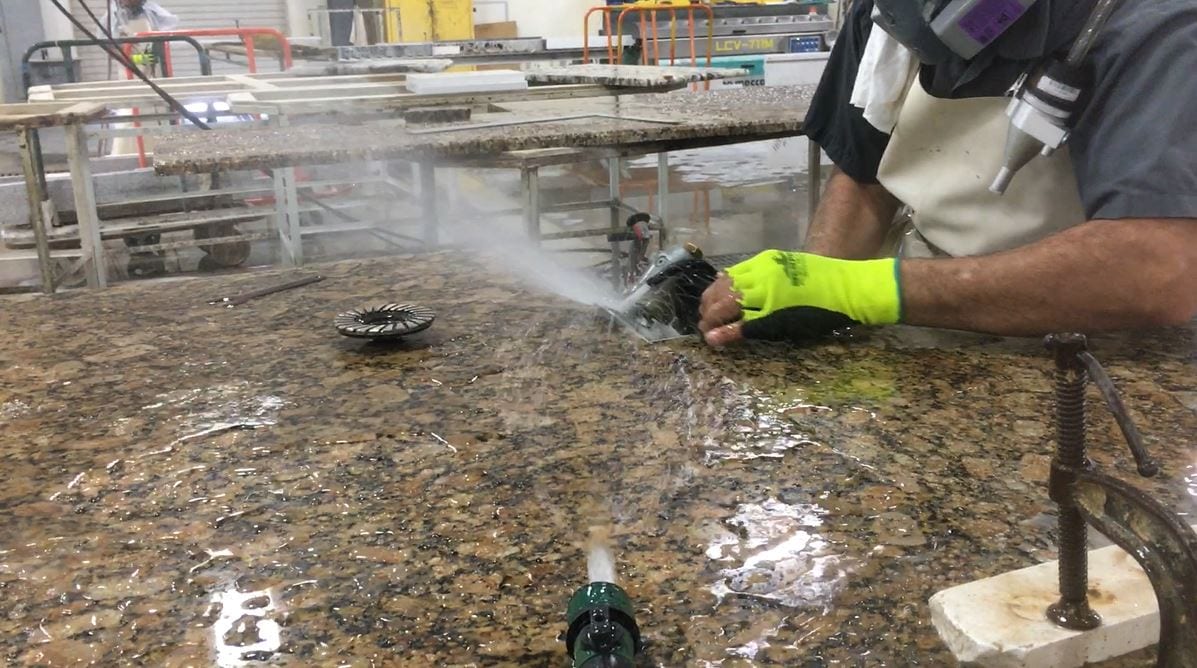Key points
- The NIOSH Engineering Controls Program seeks to protect workers through engineering interventions that can eliminate hazards and make work safer.
- The Program develops and tests engineering controls for their effectiveness at reducing exposures to chemical, biological, and physical hazards.

Overview

To Learn More
Engineering controls protect workers by removing or reducing hazardous conditions such as harmful air contaminants or dangerous noise levels. Well-designed engineering controls can be highly effective in protecting workers through solutions like machine guards or local exhaust ventilation (LEV). The mission of the NIOSH Engineering Controls Program is to eliminate occupational diseases, injuries, and fatalities through a focused program of research and prevention across all industries and sectors. Traditionally, the hierarchy of controls approach has been an important tool for determining how to implement feasible and effective control solutions.
NIOSH engineering control efforts include the following activities:
- Plan and conduct research on engineering control technology to prevent worker exposures to hazards.
- Promote the application of effective engineering control technology for safeguarding worker safety and health.
- Provide expertise in formulating effective and credible workplace standards.
- Provide consultation in the application of effective control solutions and techniques for hazard prevention.
- Promote the application of Prevention through Design (PtD) as one of the best ways to prevent and control occupational injuries, illnesses, and fatalities by "designing out" or minimizing hazards and risks using engineering control solutions.
Program priorities
The ENG Program has selected research priorities on the basis of burden, need, and impact and collaborated with other NIOSH research programs to write the research goals in the NIOSH Strategic Plan for FYs 2019-2026. Priority areas include (but are not limited to):
- Hearing loss prevention in Construction, Manufacturing, Mining, Oil and Gas Extraction, and Services.
- Airborne contaminants, for example crystalline silica in Mining and Construction.
- Hazardous drugs, surgical smoke, and infectious aerosols in the Healthcare and Social Assistance sector.
- Drilling fluids in the Oil and Gas Extraction sector.
- Nanomaterials and other advanced materials in Manufacturing and Construction.
What we've accomplished
in 2022-2023, The Program:
- Published the peer-reviewed journal article: Use of a Negative Pressure Containment Pod Within Ambulance-Workspace During Pandemic Response. This technology can help protect healthcare workers from respiratory pathogens while they provide emergency care.
- Published two peer-reviewed laboratory-based studies on emissions and crystalline silica content of airborne dust from grinding natural and engineered stone and caution on using tetrahydrofuran to process crystalline silica samples from engineered stone. Both studies advance the research on effective analysis and control of silica dust to protect workers from occupational exposures.
- Published the peer-reviewed journal article: Evaluating vacant middle seats and masks as Coronavirus exposure reduction strategies in aircraft cabins using particle tracer experiments and computational fluid dynamics simulations
- Published Engineering controls for respirable crystalline silica hazards that highlights NIOSH research to control silica exposure in the construction, manufacturing, and oil and gas industries.
- Published Ergonomic engineering solutions for airport baggage handling that shares results from evaluating equipment and processes to reduce strain and injuries in baggage handling workers.
- Published a Case Study: Efficacy of Engineering Controls in Mitigating Diacetyl and 2,3-Pentanedione Emissions During Coffee Grinding. Temporary ventilated enclosures used as engineering control measures in this study effectively reduced emissions at the source
What's ahead
In the future, the Program aims to:
- Publish a peer-reviewed journal article on the design and evaluation of four low-cost engineering controls for additive manufacturing and 3D printing.
- Publish guidance that summarizes ventilation strategies and related resources that can reduce infectious aerosol exposures in indoor air environments.
- Conduct additional research on the effectiveness of HEPA filtration in an ambulance module and publish additional recommendations for ambulance-based interventions for infectious aerosols.
Contacts
Contact the NIOSH Engineering Controls Program at engineeringcontrols@cdc.gov with any questions.
Resources
More information on specific workplace safety and health topics and useful resources can be found on the Directory of Engineering Controls.
